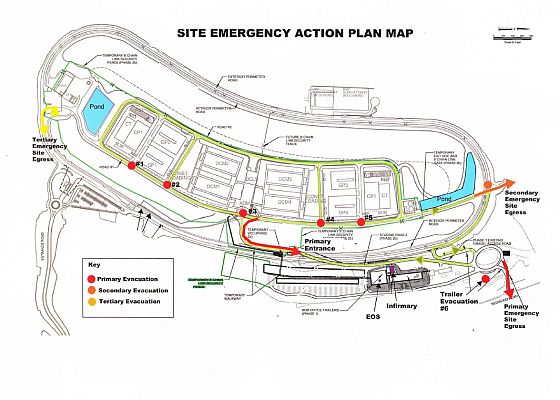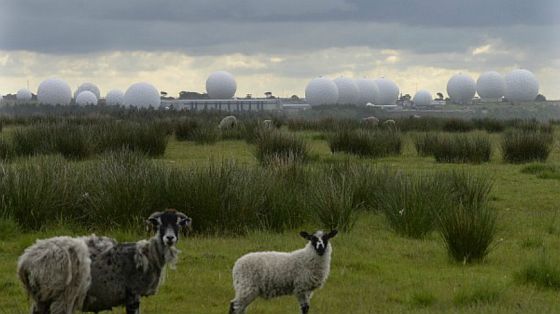By Steve Wright1, Surveillance & Society, 2005
Abstract
This article tells the story behind the uncovering of the US operated global telecommunications interceptions system now known as ECHELON. It begins with the use of fieldwork techniques in the early 1970’s exploring the configuration of Britain’s Post Office towers – these were ostensibly the microwave links through which Britain’s long distance telephone calls were made. This modelling process revealed a system within the system of microwave towers linked to the American base of Menwith Hill in the North York Moors. All the key researchers were then promptly arrested, a raid by Special Branch on the author’s university at Lancaster ensued and later a show trail for the other main researchers, most notably Duncan Campbell. Eventually in 1988, Duncan wrote up the ECHELON story, which for its time was an incredible piece of detective work using materials lifted from waste bins by the women activists campaigning around the Menwith Hill Base. Little notice was taken until 1997 when an obscure book by Nicky Hager, Secret Power explained the role and function of ECHELON in more depth. The author represented these findings in a policy report to the European Parliament on the technology of political control that led to a process of political debate and disagreement of the ethics of such a system which continues even today.
Introduction
Studies of surveillance are challenging, and often demand a sustained research commitment. It is no coincidence that many of the key British researchers active in this field in the early 1970’s remain so today. I am currently still working on issues of what are essentially tools of social and political control – both professionally as an Associate Reader at Leeds Metropolitan University in the Praxis Centre, ethically as a lecturer in the School of Applied Global Ethics and politically as chair of the Board of Trustees of Privacy International.
This article describes how I became engrossed in studying ‘technologies of political control’, and tracked the members of the security industrial complex, responsible for proliferating it to some of the world’s most unsavoury regimes. More specifically, it relates how a lowly postgraduate researcher stumbled across the entrails of a global telecommunications interception system; precipitated the first Special Branch police raid on a British University; provoked the first ever parliamentary debate on the British secret police; and accidentally detonated a worldwide political and ethical debate on the existence of a futuristic global electronic spying network, now known as ‘ECHELON’. In relating my personal experience of researching the ECHELON trail, I hope to illustrate how many of the challenges facing surveillance scholars during critical periods of their work can be faced and eventually overcome without the researcher becoming part of the food chain of the process they are watching.
ECHELON is a (now out-of-date) code name given to the US National Security Agency’s worldwide facility for the mass interception of electronic telecommunications including, phone, fax and email using key words and context. It works on the basis that other telecommunication links can be used to siphon off messages travelling by satellite, microwave relay link or fibre optic cable, if they intercept such streams at a key node, and can work at a prodigious rate of more that 2 million intercepts per hour. Essentially, the system can work because for some of its journey, telecommunications traffic is travelling as an electronic stream that can be intercepted if the appropriate infrastructure is in place. However, the current wisdom is that ECHELON does not exist in the way it was originally construed but is a now thought to be a collection of subsets of interception capabilities using a range of code names of which we remain ignorant. Nevertheless, for the sake of simplicity, it makes sense to continue to use the generic label ‘ECHELON’ whilst recognizing that new surveillance algorithms have evolved since the early researchers built their crude paradigms.
My interest in surveillance studies began over three decades ago when no such field existed. I was a student at Manchester University on an unusual course, entitled ‘Liberal Studies in Science’. The course attempted to bridge the communication gap between science and the humanities, and create ‘literate scientists’ (in the wake of C.P Snow’s famous critique of the ‘two cultures’). The training given by the course certainly paid off in the years which followed, since it enabled its students to look at specific technical problems with perspectives from many different disciplines.
I became fascinated by the process of technology assessment: the attempt to examine unforeseen impacts of technological innovation. For example, the course examined nuclear arms races, and the parallels with arms races emerging in counter-insurgency conflicts, which were then in the news, fired my imagination. The course’s coverage of the Vietnam War highlighted a new generation of military systems which had potential domestic uses such as helicopter-mounted flight stabilized CCTV night vision cameras, already beginning to find a market in policing the U.S. home front.
At the same time on the UK home front, the British Society for Social Responsibility in Science (BSSRS) was just beginning to examine the deployment of new weapons and technologies in the burgeoning ‘troubles’ in Northern Ireland: a province that was about to become the most surveilled zone in Europe. BSSRS conceptualized this new equipment as a ‘technology of political control’. According to BSSRS, this technology encompassed new crowd control technologies designed to appear safe (rather than be safe), new torture technologies designed to induce psychological breakdown; and new surveillance and telecommunication systems that provided a powerful nervous system for ‘the strong state’. Continue reading


